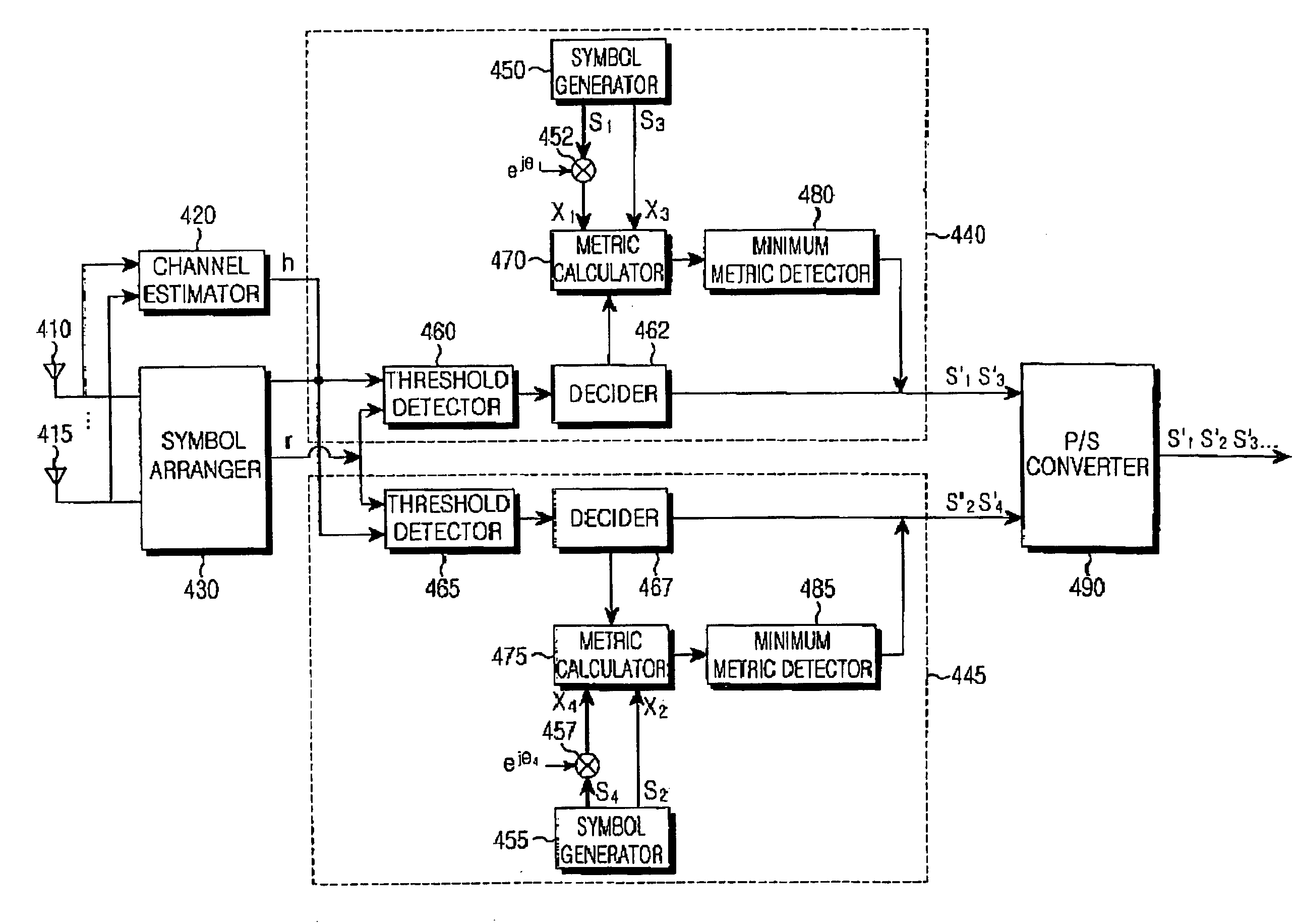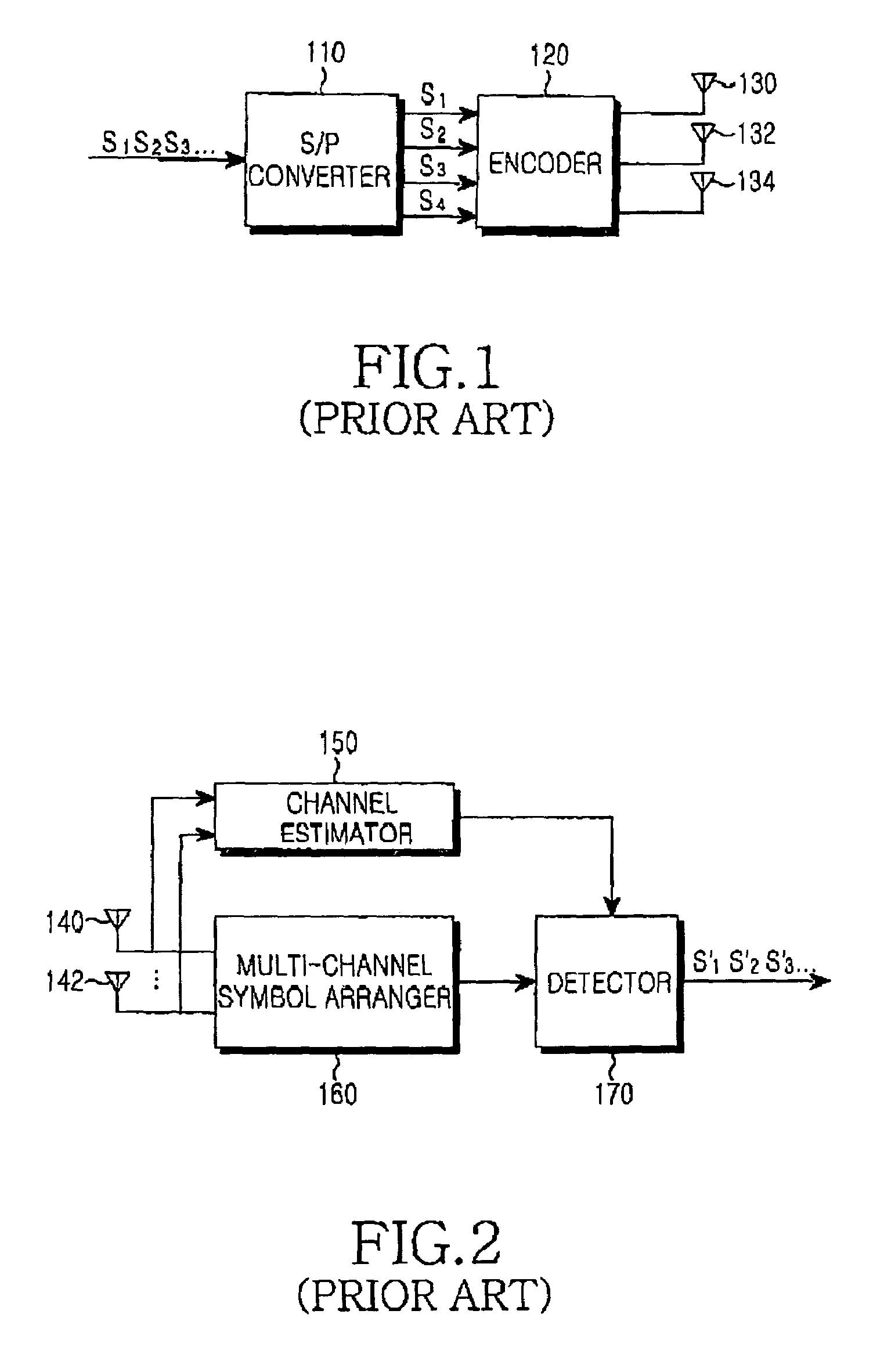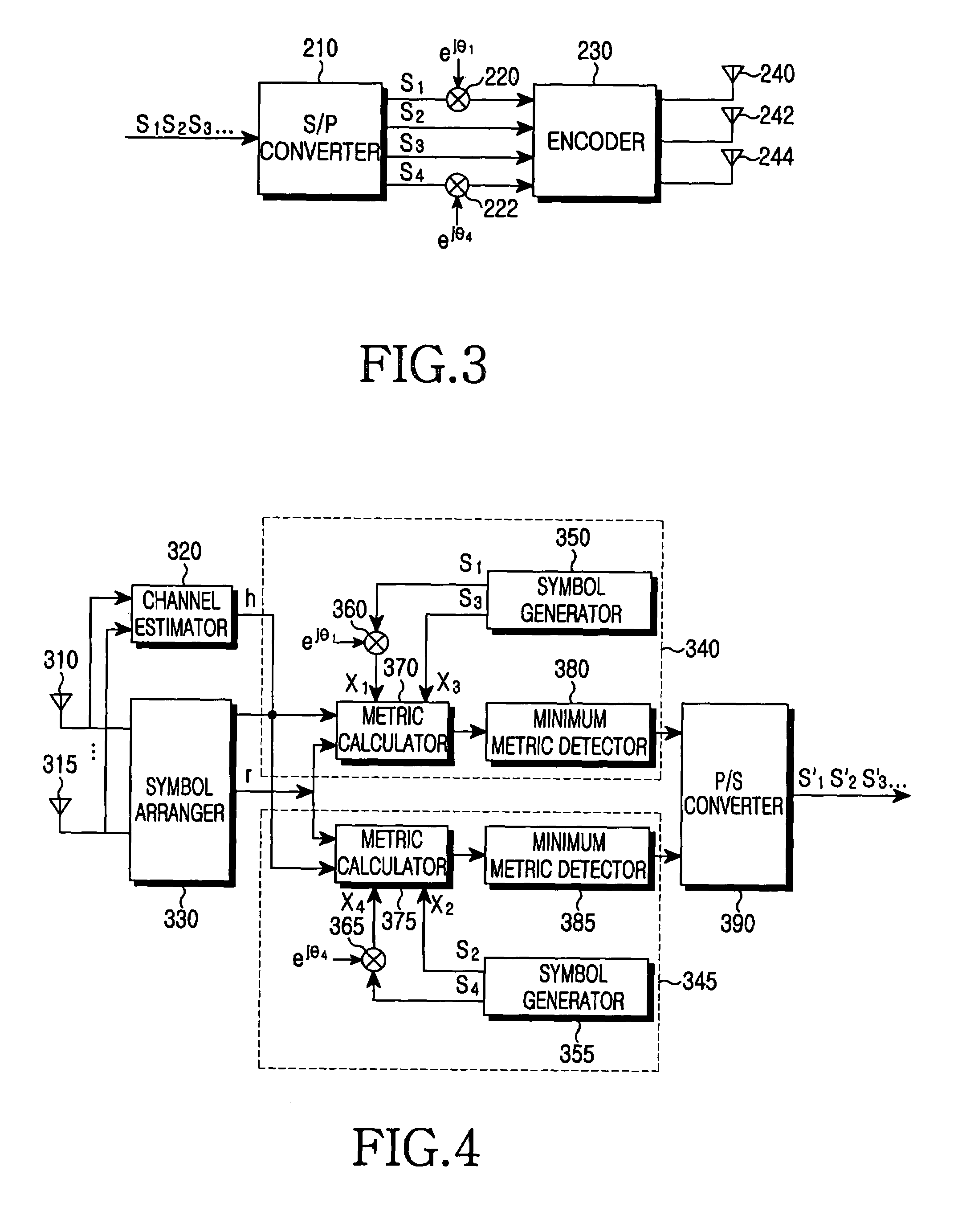Receiving apparatus in a radio communication system using at least three transmitter antennas
a technology of radio communication system and receiving apparatus, applied in the field of radio communication system, can solve the problems of data rate loss, degrade reception performance, and half-time data rate reduction
- Summary
- Abstract
- Description
- Claims
- Application Information
AI Technical Summary
Benefits of technology
Problems solved by technology
Method used
Image
Examples
Embodiment Construction
[0026]A preferred embodiment of the present invention will be described herein below with reference to the accompanying drawings. In the following description, well-known functions or constructions are not described in detail since they would obscure the invention in unnecessary detail.
[0027]For input of four symbols, symbols transmitted through three antennas for four time intervals are expressed as shown in matrix (2):
[0028]C43=[ s1s2s3s4s5s6s7s8s9s10s11s12](2)
[0029]As is known, a receiver adopting ML (Maximum Likelihood) decoding computes metrics between a received signal and all possible symbols using channel estimates representing channel gains from transmitter antennas to receiver antennas, and detects a symbol giving a minimum metric.
[0030]Let a channel estimate from an ith transmitter antenna to a receiver antenna receiving the symbols of matrix (2) be hi. A metric for an arbitrary symbol set ct is computed as shown in formula (3):
[0031]∑t=14rt-∑i=13hici2(3)
where rt is ...
PUM
 Login to View More
Login to View More Abstract
Description
Claims
Application Information
 Login to View More
Login to View More - R&D
- Intellectual Property
- Life Sciences
- Materials
- Tech Scout
- Unparalleled Data Quality
- Higher Quality Content
- 60% Fewer Hallucinations
Browse by: Latest US Patents, China's latest patents, Technical Efficacy Thesaurus, Application Domain, Technology Topic, Popular Technical Reports.
© 2025 PatSnap. All rights reserved.Legal|Privacy policy|Modern Slavery Act Transparency Statement|Sitemap|About US| Contact US: help@patsnap.com



